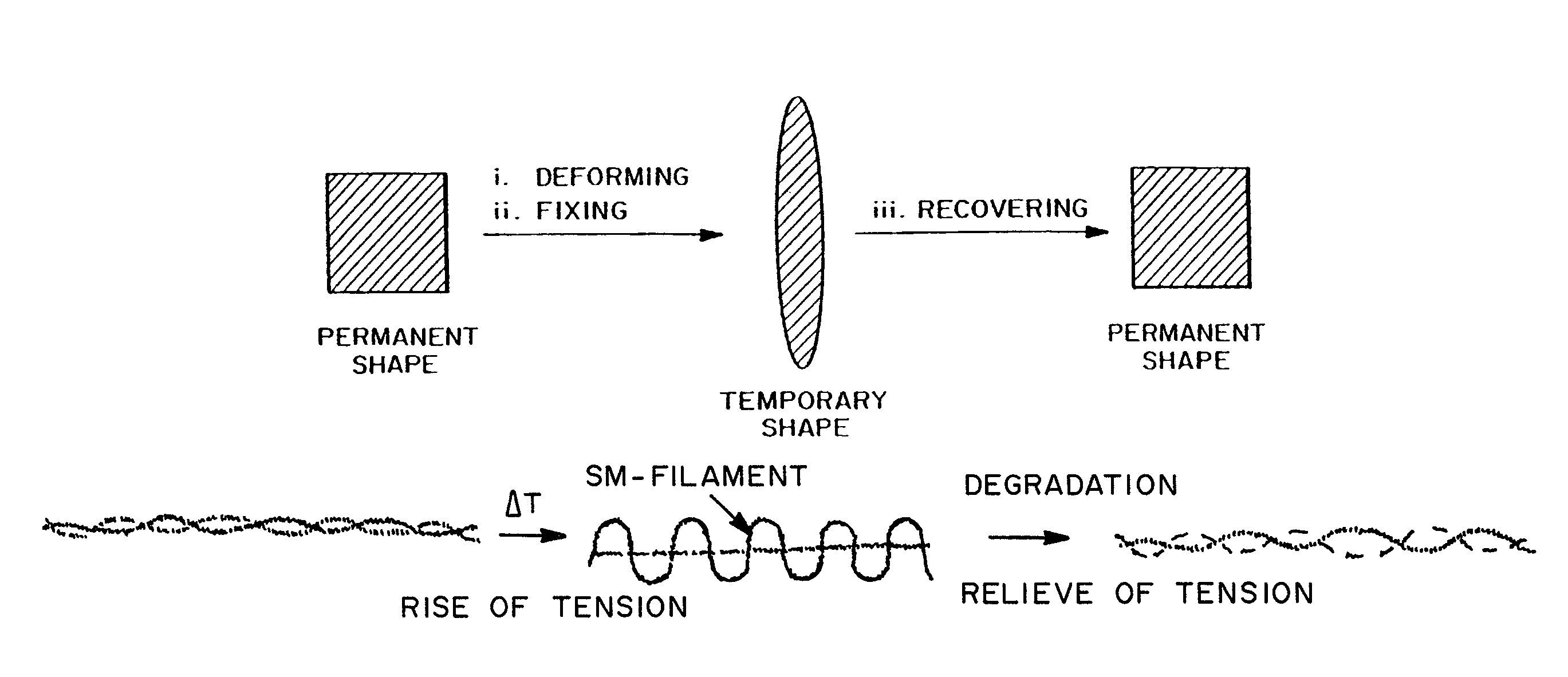Biodegradable shape memory polymeric sutures
a polymeric suture and biodegradable technology, applied in the field of biodegradable shape memory polymeric sutures, can solve the problems of stress and strain being absorbed by the soft segment, medical devices implanted, and materials that have not yet been widely used
- Summary
- Abstract
- Description
- Claims
- Application Information
AI Technical Summary
Benefits of technology
Problems solved by technology
Method used
Image
Examples
example 1
Smart Suture Formed of Biodegradable Shape Memory Polymer
[0120]Synthesis of Biodegradable Shape Memory Polymer In the first step of the synthesis, macrodiols with different thermal characteristics were synthesized via ring opening polymerization of cyclic diesters or lactones with a low molecular weight diol as initiator and purified according to reported methods (A. Lendlein, P. Neuenschwander, U. W. Suter, Macromol. Chem. Phys., 201, 1067, (2000)). Oligo(ε-caprolactone)diol (OCL) was chosen as precursor for the switching segments (soft segments) having a melting transition temperature (Ttrans). Crystallizable oligo(p-dioxanone)diol (ODX) with a melting transition temperature (Tm=Tperm) was chosen as hard segment to provide the physical crosslinks. The melting transition of the latter macrodiols was determined by the average chain length which can be tailored by the monomer / initiator-ratio.
[0121]In the second step, the two macrodiols were coupled with 2,2(4),4-trimethylhexanediisoc...
PUM
| Property | Measurement | Unit |
|---|---|---|
| degree of crystallinity | aaaaa | aaaaa |
| degree of crystallinity | aaaaa | aaaaa |
| pH | aaaaa | aaaaa |
Abstract
Description
Claims
Application Information
 Login to View More
Login to View More - R&D
- Intellectual Property
- Life Sciences
- Materials
- Tech Scout
- Unparalleled Data Quality
- Higher Quality Content
- 60% Fewer Hallucinations
Browse by: Latest US Patents, China's latest patents, Technical Efficacy Thesaurus, Application Domain, Technology Topic, Popular Technical Reports.
© 2025 PatSnap. All rights reserved.Legal|Privacy policy|Modern Slavery Act Transparency Statement|Sitemap|About US| Contact US: help@patsnap.com



